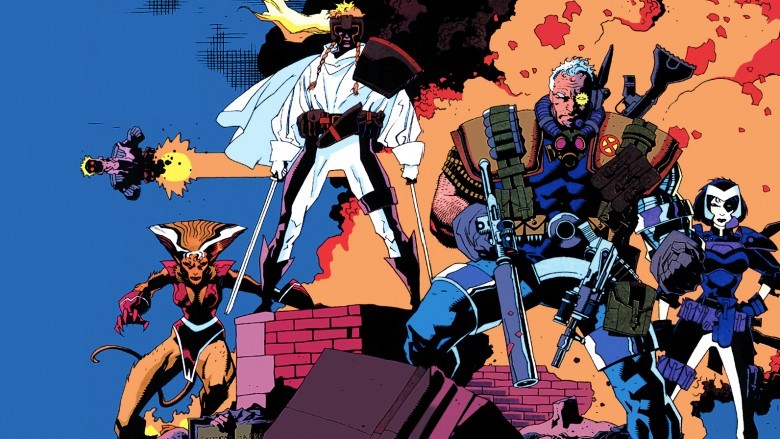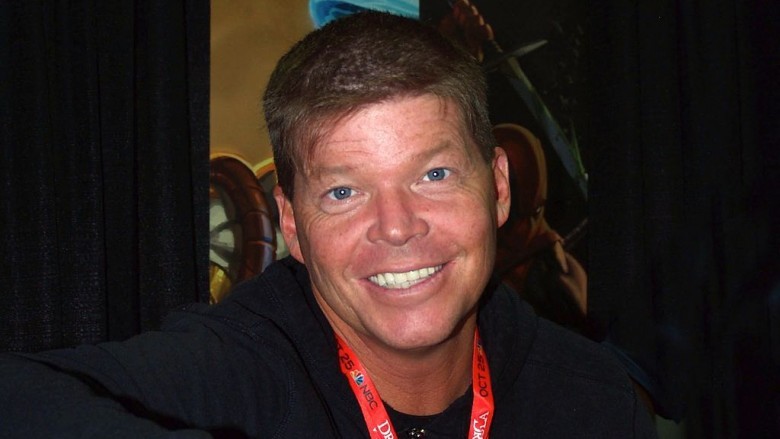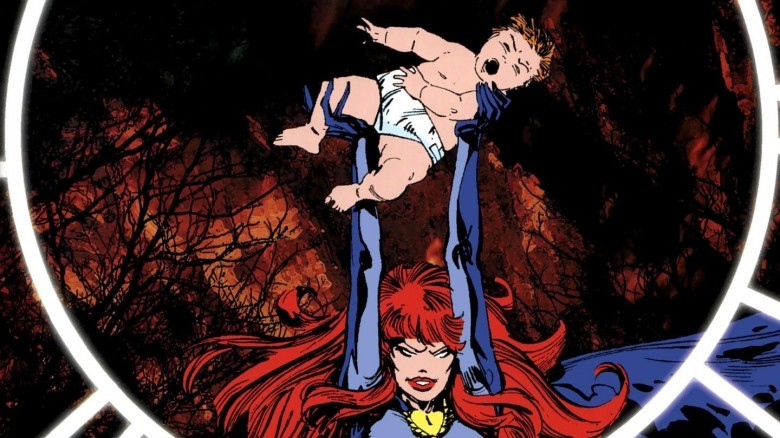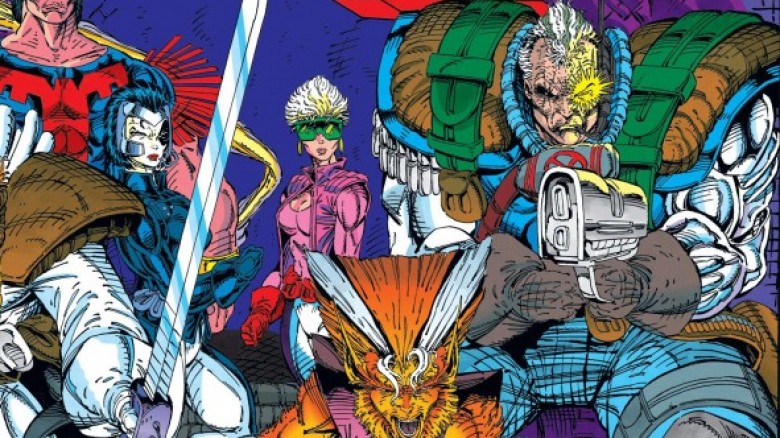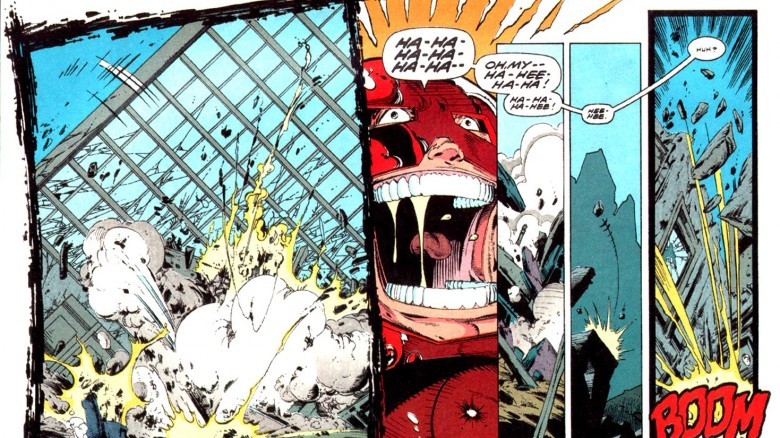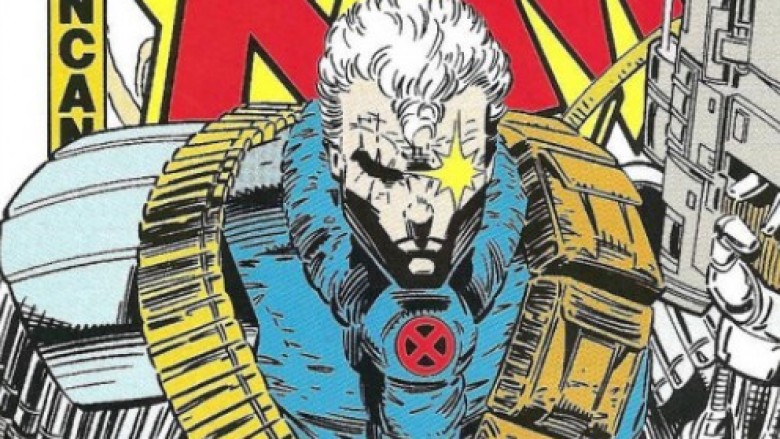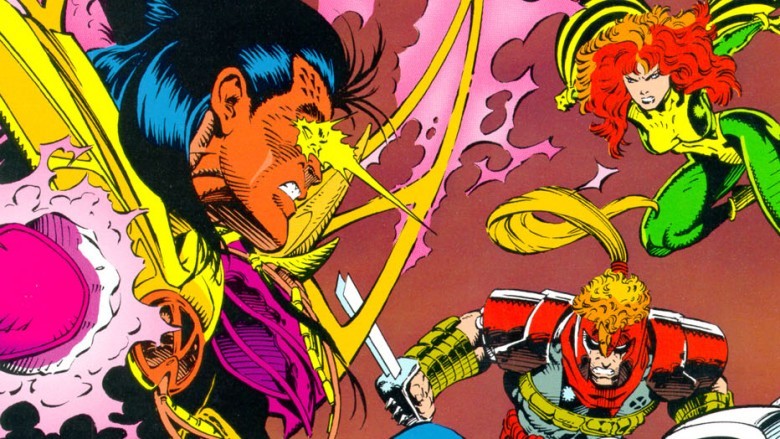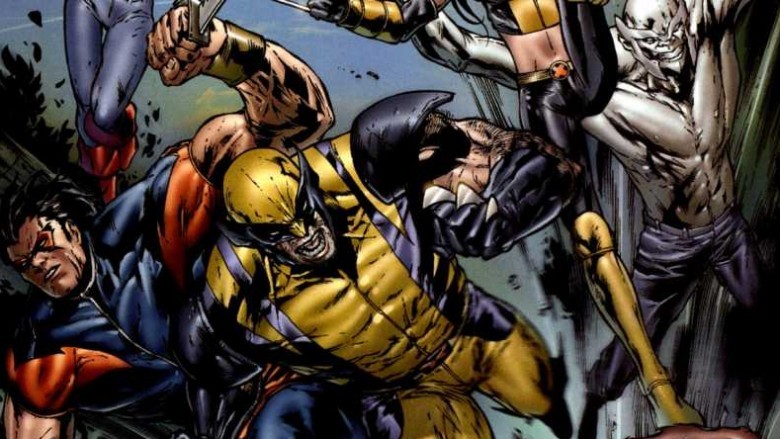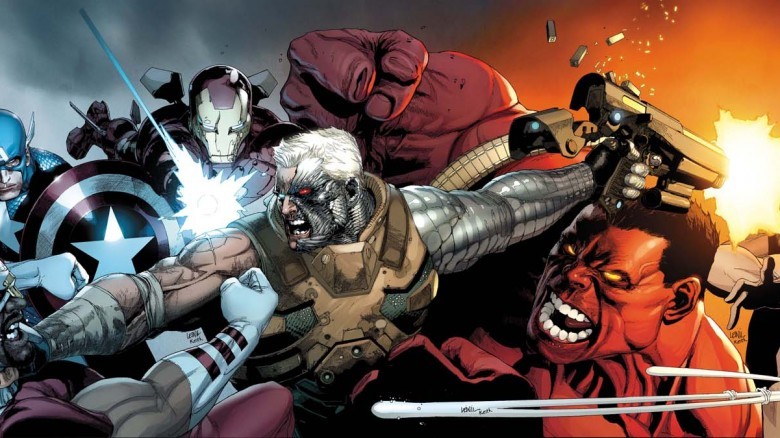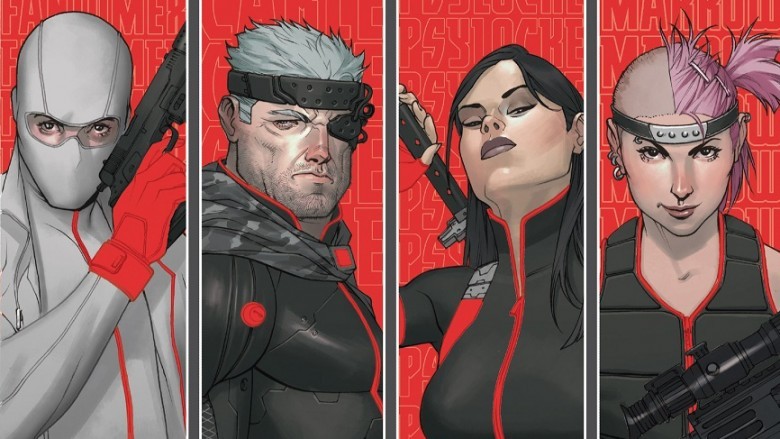The Weird History Of X-Force
X-Force, typically led by macho, gun-toting future soldier Cable, is all about kicking ass now and asking questions never—offering a rougher philosophical counterpart to Marvel Comics' original X-squad, the touchy-feely X-Men. Cable will be appearing in Deadpool 2 and the upcoming X-Force movie, but even though the squad leader and his team are about to explode in popularity, many don't know about their strange and tangled history. Fortunately, you don't have to travel from the past to the future and back again to understand everything about the team—we've rounded up the untold truth of X-Force for you right here.
Rob Liefield
Before coming to Marvel, X-Force creator Liefield was a relatively unknown artist for DC Comics, having worked on their miniseries Hawk and Dove. He took the reins on New Mutants #87 and quickly started to make some bold changes, introducing characters such as Cable as well as modern fan favorites Deadpool and Domino. This left Marvel at something of a crossroads: they had a popular artist for New Mutants, but the idea behind that series (to focus on the next generation of mutants that Xavier started training when he thought his X-Men were dead) was running out of steam.
Thus, Liefield ended up creating X-Force. The series combined veteran New Mutants characters with Liefield's new creations, and proved an instant hit: the first issue sold over five million copies. It didn't take long for Liefield to leave Marvel and begin a controversial run over at Image Comics, though Marvel periodically brought him back to inject extra life into certain comics. Wherever Liefield was working, though, he pretty much defined the bulked-out '90s superhero aesthetic, and he's the one you can either thank or blame for Cable and Deadpool (and countless other characters) having more pouches than your entire wardrobe put together.
It all started with Cyclops and Madelyne Pryor
The story of X-Force actually starts with Cyclops and Madelyne Pryor, and a series of weird retcons that led to Cable being born. After his lifelong love Jean Grey apparently died, Cyclops married a woman who looked pretty much just like her, Madelyne Pryor, and they had a son, Nathan Christopher Summers, who debuted in Uncanny X-Men #201. Madelyne turned out to be a Jean Grey clone created by Mr. Sinister—and Jean herself ended up being alive—so after Madelyne went crazy and effectively died, Cyclops and Jean tried to raise the child. The villain Apocalypse infected Nathan with a techno-organic virus that would certainly kill him, so Cyclops consented to sending the infant 2,000 years in the future where he could be healed.
In reality, that complex plot was mostly a reason to get the child out of the picture so Cyclops and Jean Grey could concentrate more on fighting and less on childcare. And Liefield mostly wanted to create a badass cyborg mutant character from the future, debuting Cable in New Mutants #87. And since there was already a cyborg-like baby mutant sent to the future in the form of Nathan Christopher Summers, the two were turned into a single character, giving Cable deep connections to the X-Men that would influence his stories for decades.
The disbanding of the New Mutants
As a comic, X-Force spun out of the New Mutants. The New Mutants, meanwhile, had the distinction of being the first spinoff of the successful Uncanny X-Men. Initially, the New Mutants were taught by Charles Xavier, who had brought the team together when he thought the X-Men were dead in space. When Xavier was seriously injured, he surprisingly left longtime frenemy Magneto as headmaster and mentor to his young charges; however, they frequently ran off on their own.
Eventually, the New Mutants left Magneto altogether, and after the departures of team members like Mirage and Sunspot, they were effectively dissolved as a team. Just in the nick of time, Cable showed up from the future in New Mutants #87 and told them they could work together to prevent terrible things from happening. New Mutants ended with issue #100, and X-Force was born with a bold new mission.
New team, new mission
Professor Xavier's X-Men and the initial offshot groups such as X-Factor were mostly reactive—they were dedicated to peaceful coexistence between mutants and humanity, so they typically only stepped in to battle their enemies after those enemies had caused trouble. Ideally, this would help mutants be seen more as peacekeepers, but with the arrival of Cable, X-Force had an opportunity to be an entirely different kind of team.
To an extent, Cable is a one-man version of Minority Report: because he knows some of the terrible things that will happen in the future, he's able to focus his team on preventing those events by eliminating threats to mutants and humanity before they happen, starting with X-Force #1. Of course, as they quickly realized, there's a cost to being such a militant and pro-active group: they were initially branded as terrorists.
Heroes or terrorists?
Depending on your point of view, Cable and his X-Force were everything humanity ever feared about mutants. They were basically well-armed and lethal vigilantes who operated outside the traditional justice system and the support network of other heroes. Thus, while their early missions focused on defeating the Mutant Liberation Front and the mutant Stryfe (who is himself Cable's evil clone), they were designated terrorists by S.H.I.E.L.D., and periodically clashed with the agency and other heroes. It didn't help their reputation that they were present when Juggernaut destroyed the World Trade Center in X-Force #4 (published a full decade before the Towers were actually destroyed in 2001).
Over time, X-Force had an on-again, off-again relationship with the hero community. The comic portrayed them as mostly fighting for the forces of good rather than evil, as when they help defeat Stryfe during the X-Cutioner's Song event. At the same time, they often run from both the X-Men (who want to protect and redeem them) and S.H.I.E.L.D., who continue to see a rogue group of super-powered beings as a threat to national security.
Clash with other heroes
X-Cutioner's Song provided a major story arc for Cable and the X-Force. The action kicked off in Uncanny X-Men #294, when someone who looked exactly like Cable shot Professor Xavier with the same techno-organic virus that had once infected Cable himself. The prognosis was slow but almost certain death, so various mutants and mutant teams came together to help cure Xavier—and arrest Cable and the X-Force.
Ultimately, of course, Professor Xavier was cured, and his would-be assassin was revealed to be Cable's clone, Stryfe. Meanwhile, Cable and the X-Men defeated Stryfe, but both Cable and his clone doppelgänger were sucked into a portal, leading the heroes to believe both were dead. As a result, Cannonball took over as the leader of X-Force, and their longtime foes the Mutant Liberation Front were finally defeated.
Cable and fatal attractions
Cable managed to come back for another major X-Men event: Fatal Attractions. (Most fans remember this as the story in which Magneto removes all the adamantium from Wolverine's body.) The X-Men and their allies were attacking Magneto after he threatened all life on Earth, and Magneto was operating out of a spaceship that once served as a base for Cable. Starting with X-Force #25, Cable helped Xavier and his mutants in their fight against Magneto, but it went about as well as Wolverine's attack. Cable, still infected by the techno-organic virus, had plenty of metal in his body for Magneto to manipulate. He managed to escape to safety, but it took a long time for him to recover from his injuries.
Reforming under Wolverine
Years later, a brand new X-Force was assembled under a brand new leader, Wolverine, during the Messiah Complex storyline, which kicked off in earnest in the X-Men: Messiah Complex one-shot. The X-Men were reeling from a Scarlet Witch spell that had taken away the powers of most of the world's mutants. As a race, mutants were facing extinction, and to make matters worse, no new mutant children had been born for awhile. This all changed when a mutant baby was detected, and the X-Men (along with many other groups) embarked on a frantic search for the child.
At one point, this mutant baby was in the custody of Cable. Wolverine ended up assembling a team that excelled at tracking people, including characters like Caliban, X-23, and Wolfsbane. Wolverine trusted them to help find the child—and to kill Cable if it came to it. Cable ultimately took the child to the future, where he was able to raise and train her, and Cyclops, having seen how useful X-Force can be, later decided to reform the team and get them back to their roots. Wolverine led the team in lethally dealing with threats the X-Men couldn't publicly take on, leaving the X-Men's hands clean while Wolverine handled the wetworks. When Cyclops later disbanded the team, Wolverine kept it going in secret.
Cable Fights the Future
Cable later came back from the future, and his return carried many complications. For instance, he began by targeting characters (even heroes like the Avengers) that he thought might one day represent a threat to the mutant infant he raised, a girl named Hope Summers. He wanted to do as much as he could before his body was finally killed by the techno-organic virus, but Hope and some Phoenix-powered X-Men were able to finally heal him.
After being healed, though, Cable's agenda remained very similar. He now had visions of the future as a side effect of the Phoenix Force affecting his body, so he assembled a new X-Force team in Cable and the X-Force #1. Their mission was to help Cable prevent future catastrophes, effectively bringing the concept of the team full circle.
The Alexandria incident
The most recent iteration of X-Force came about after the Alexandria Incident, an event in the Marvel Comics Universe during which more than 3,000 people died at a defense symposium. The public believed that a mutant was responsible, and Cable understood that if no one got to the bottom of it, it could lead to humanity retaliating against mutants across the world.
Cable ended up assembling yet another version of X-Force, which debuted in the fourth X-Force #1. The rather unconventional roster included Cable, Psylocke, Fantomex, Marrow, and Dr. Nemesis. Ultimately, the title only lasted for 15 issues, but with an X-Force movie around the corner, Marvel is sure to bring some version of this team back for another round of butt-kicking hijinks.
